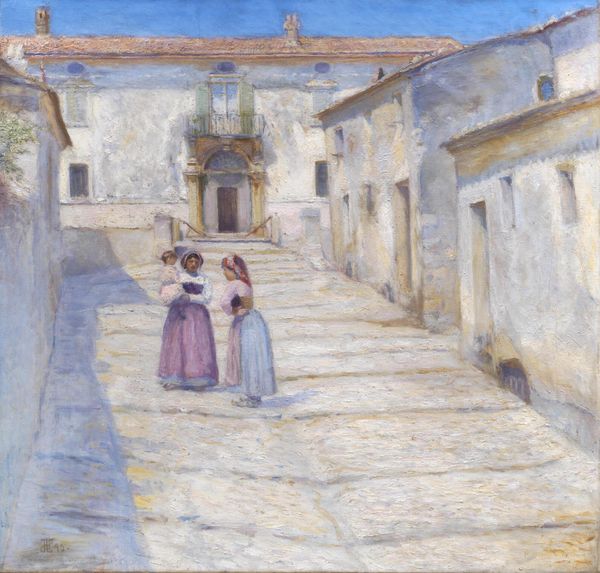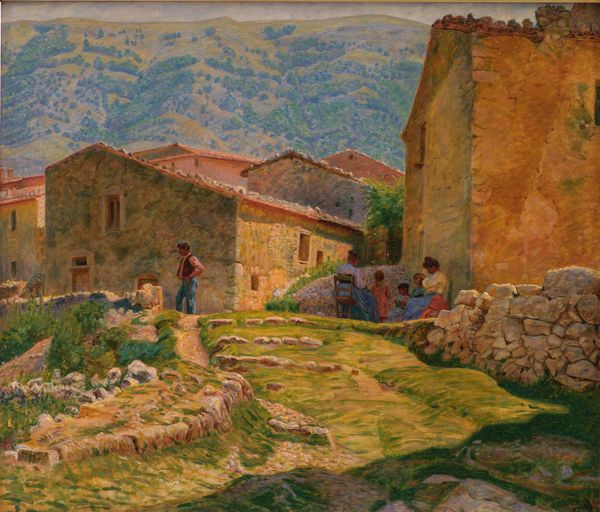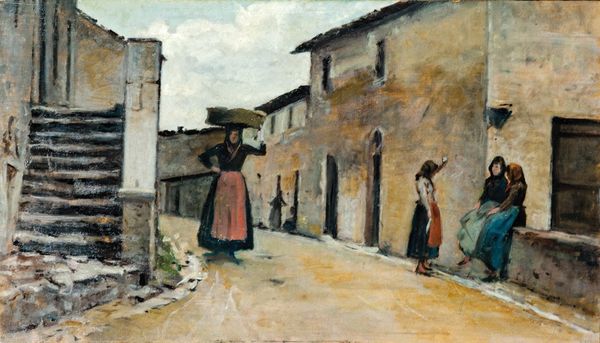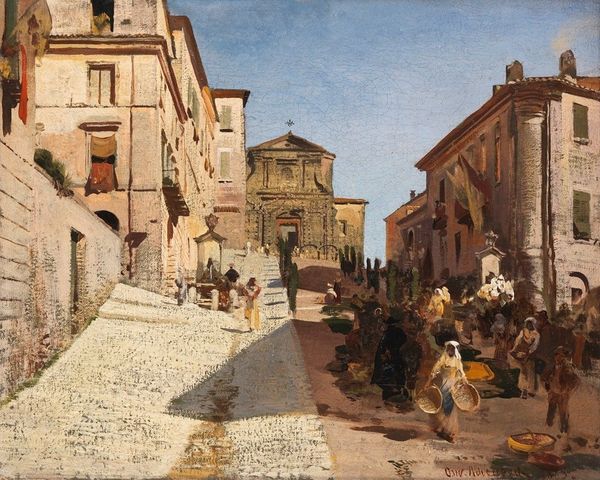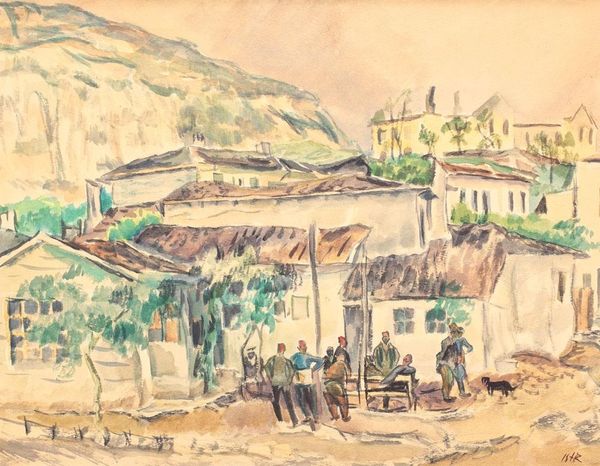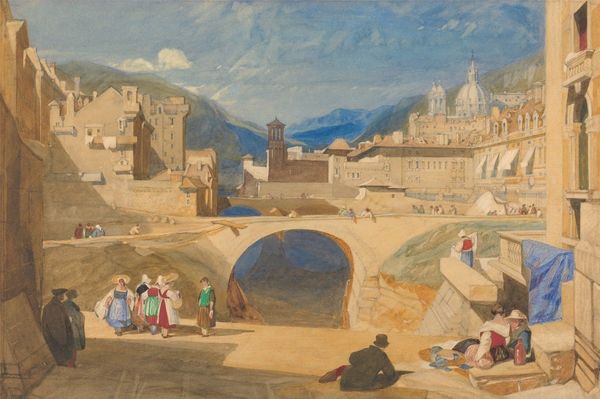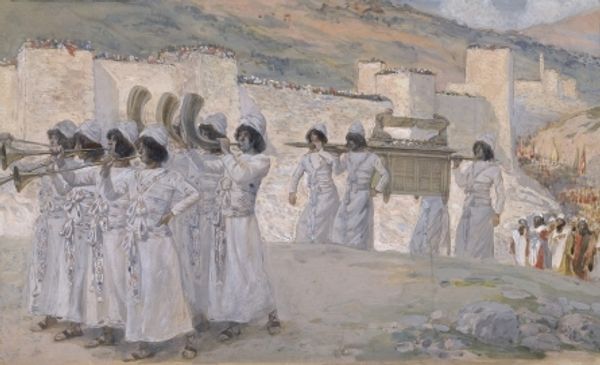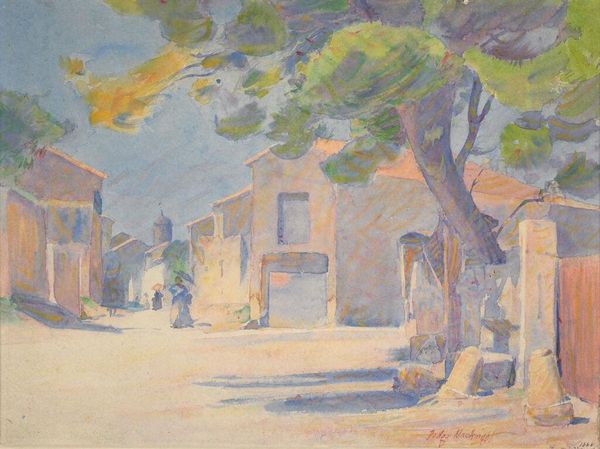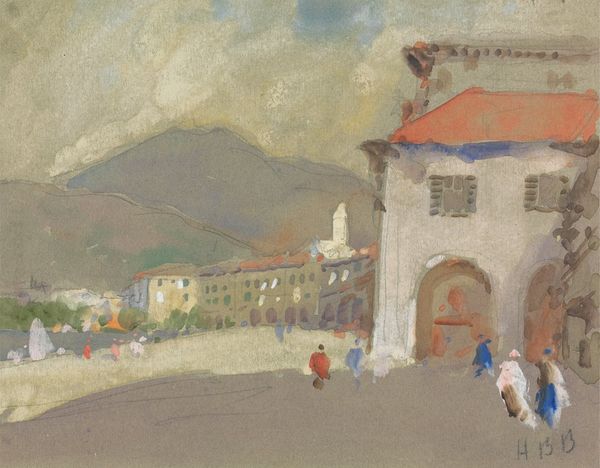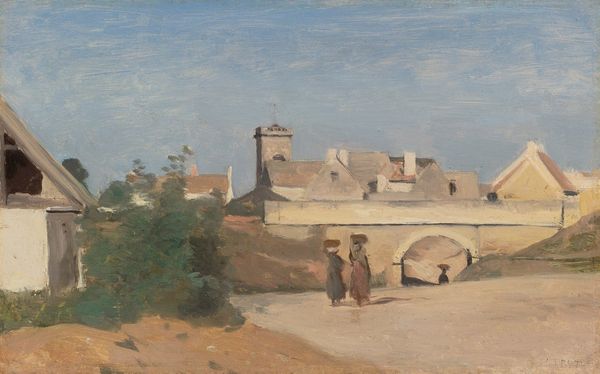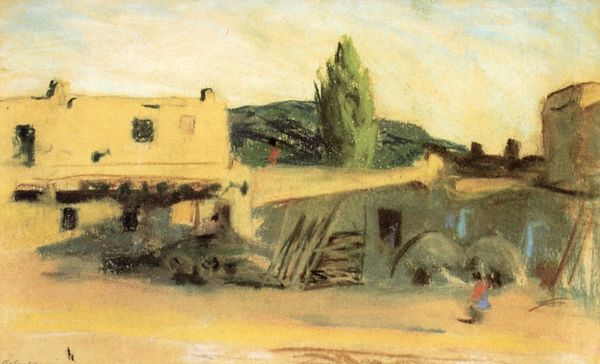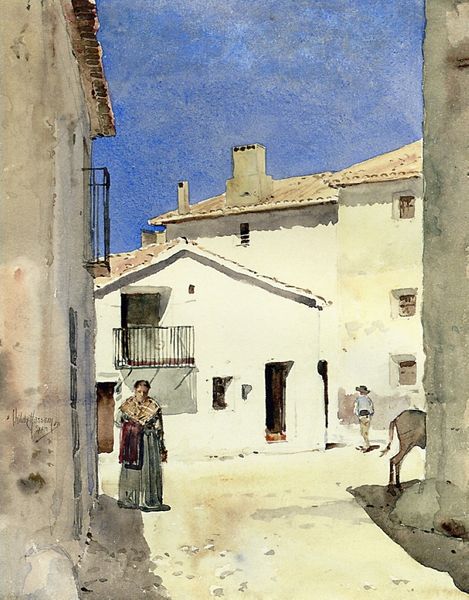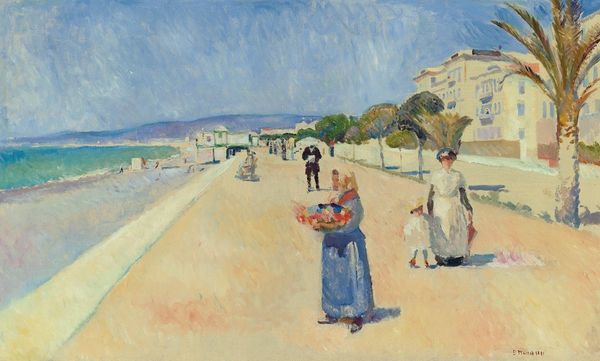
Piger på vej til brønden efter vand ved middagstid. Cività d'Antino 1890
0:00
0:00
painting, plein-air, oil-paint
#
painting
#
impressionism
#
plein-air
#
oil-paint
#
landscape
#
figuration
#
oil painting
#
genre-painting
#
watercolor
#
realism
Dimensions: 78 cm (height) x 100 cm (width) (Netto)
Curator: Look at the stillness in this piece, “Piger på vej til brønden efter vand ved middagstid. Cività d'Antino," or “Girls going to the well for water at noon, Civita d'Antino." It’s an 1890 oil on canvas by Henry Lørup. It's quiet. What catches your eye first? Editor: The heat, definitely. That unrelenting Italian midday sun just bakes the scene. It's like the whole town is taking a siesta, except for these two girls, trudging along with their empty buckets. Curator: Right. It perfectly captures the plein-air spirit, a devotion to capturing light as perceived with your own eyes, using broken brushstrokes and muted colours. Lørup went to Italy at a time when artists from all over Europe were heading south, searching for something more “authentic” than industrialised life back home. Editor: Authenticity can be a loaded term, of course. While artists romanticised this idea of rural life, were they truly engaging with the complex realities of these communities, or simply projecting their own desires and anxieties onto them? What was it like for these working class woman getting their daily chores? Curator: An excellent and necessary provocation. In a way, such paintings also performed an important service in visualizing laboring people. Think about Courbet and Millet before, whose realism shocked the sensibilities of Parisians at the Salon. Paintings like these make these people visible. Editor: I suppose I was hoping to see more grit and depth. Still, it’s interesting how Lørup contrasts the sharp light on the buildings with the softer, almost watercolor-like treatment of the landscape beyond. The composition has that stark clarity you get in Italian paintings of the 1400's Curator: Definitely. The artist clearly attempts to synthesise classicism with the painterly idiom of Impressionism. There's a subtle dance between the fleeting moment and the timelessness of daily ritual. And maybe that tension *is* the grit, if you let it be. Editor: A point well taken, that artistic decisions serve many and sometimes conflicting roles in making meaning in the viewer's experience. I find myself pondering more about the weight of those water buckets than I initially imagined. Curator: And perhaps, through Lørup's painting, we can carry some of that weight too.
Comments
No comments
Be the first to comment and join the conversation on the ultimate creative platform.
